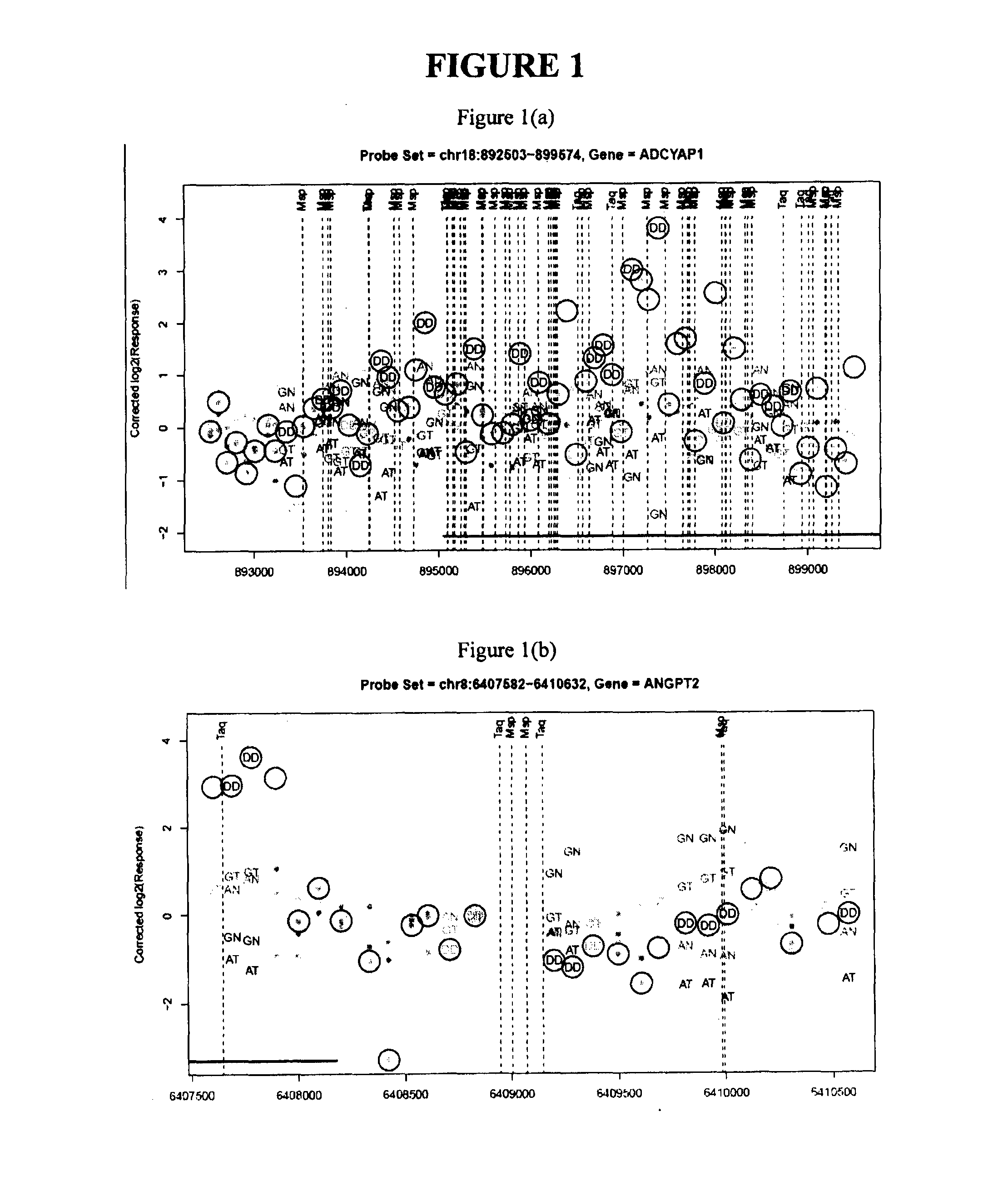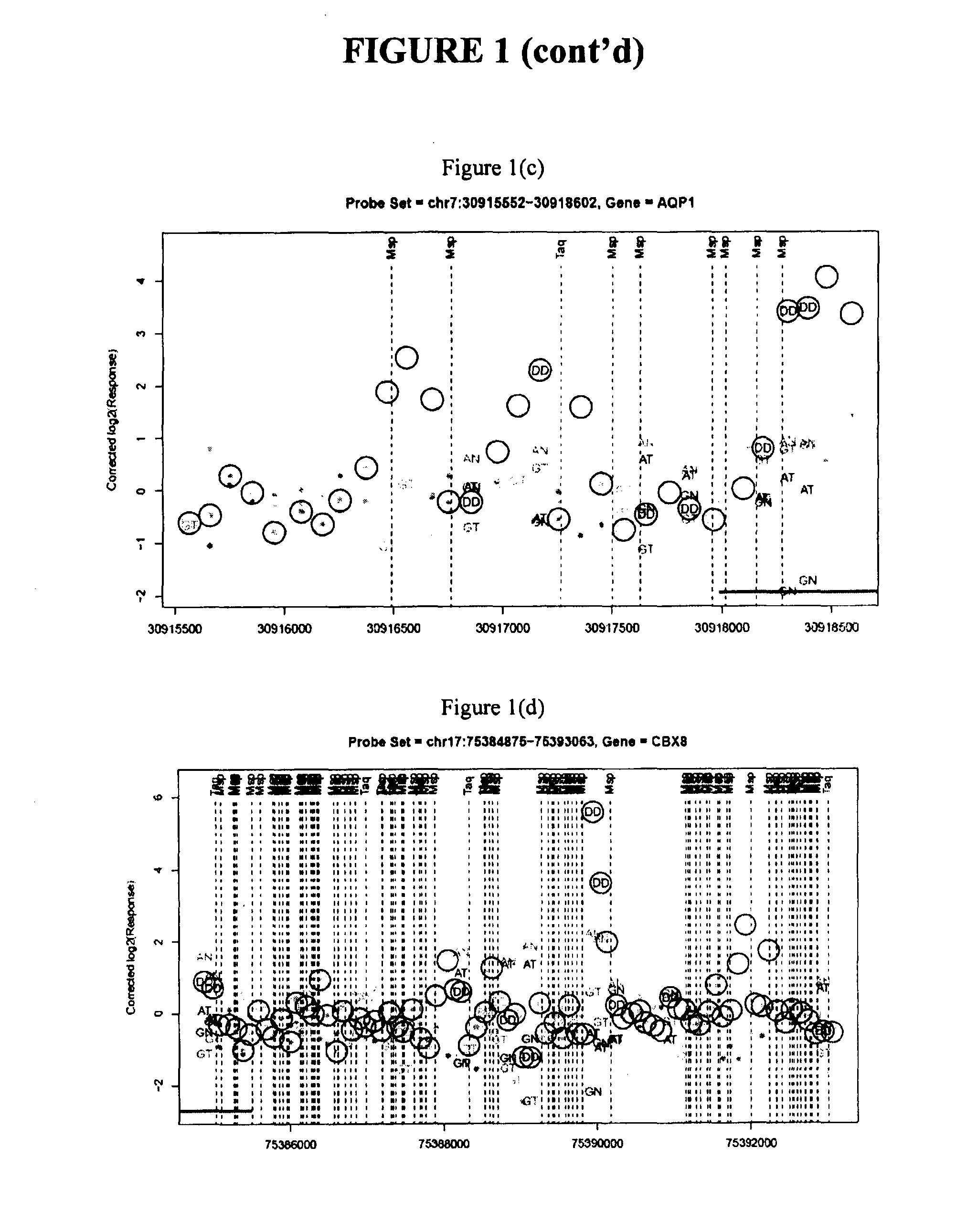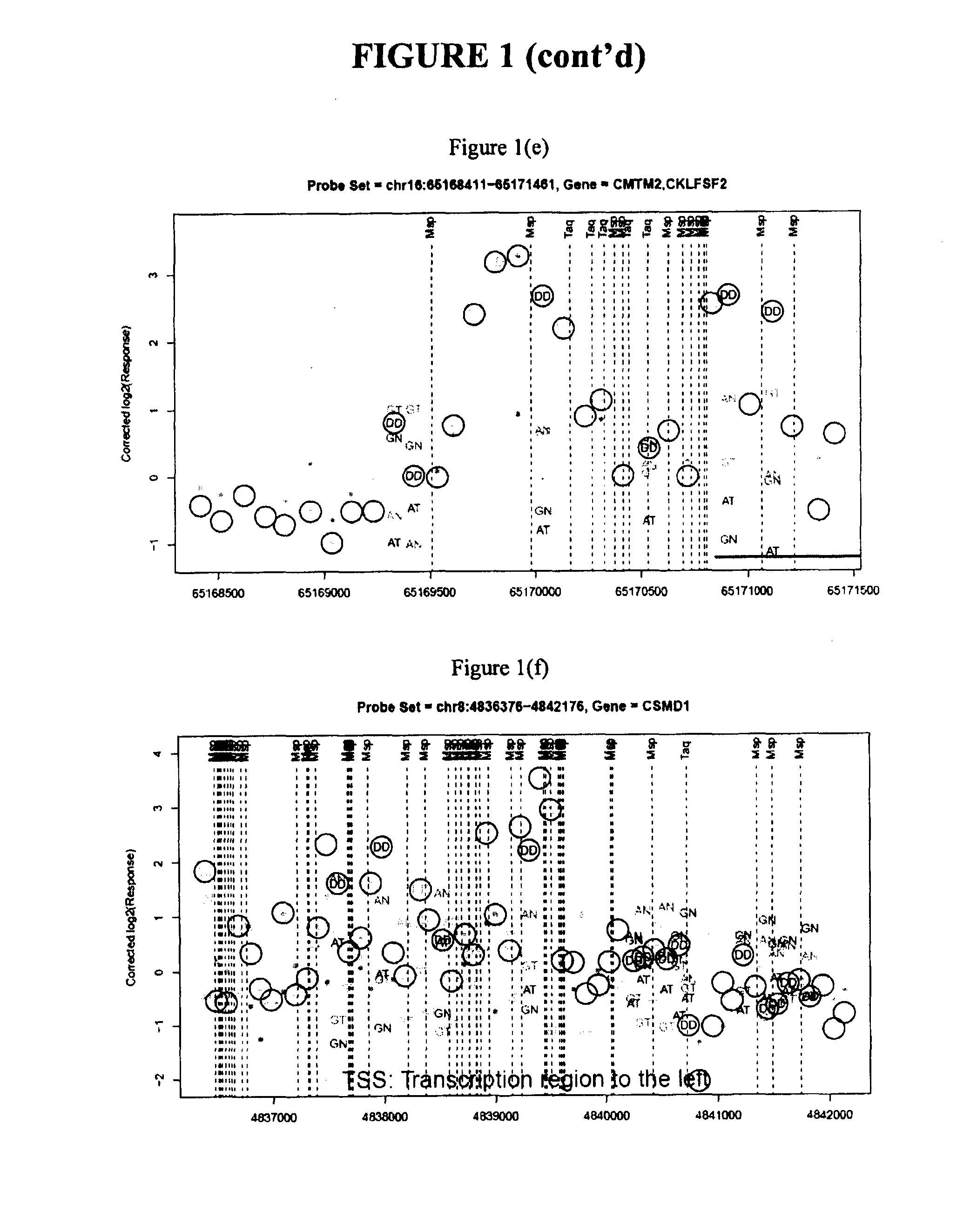Epigenetic markers of colorectal cancers and diagnostic methods using the same
a colorectal cancer and epigenetic marker technology, applied in the field of nucleic acid molecules, can solve the problems of inconvenient diagnosis of colorectal cancer symptoms, inability to reliably diagnose colorectal cancer symptoms, and inability to accurately predict the risk of current or future cancers
- Summary
- Abstract
- Description
- Claims
- Application Information
AI Technical Summary
Benefits of technology
Problems solved by technology
Method used
Image
Examples
example 1
[0301]Bisulfite-tag technology was applied to produce methylated and unmethylated genome fractions as described below. Briefly, DNAs were digested with methylation insensitive enzymes MspI and TaqI and treated with sodium bisulfite under non-denaturing conditions, such that the cytosine in the 5′-CG single-stranded overhang left by each restriction enzyme would be converted to uracil if it were unmethylated but would remain unconverted if methylated. Separate linkers with either 5′-CG or 5′-CA overhangs were ligated to provide linkered methylated and unmethylated fractions respectively. After incorporation of a second primer by random-primed copying of a reverse strand this common primer was used in combination with the appropriate forward primer to amplify the methylated and unmethylated fractions.
[0302]In detail, tumour and matched normal DNA samples from eight patients were processed and analysed as described below.
1. DNAs from cancer and normal tissues (1 to 2 ug) were sheared b...
example 2
[0324]Methylated DNA fractions from bisulfite-treated DNA of the colorectal cancer cell lines HCT116, HT29 and SW480 and from DNA isolated from whole blood were prepared using a biotin capture method described below and libraries of methylated DNA were sequenced using the Applied Biosystems SOliD sequencing system. Briefly, DNAs were sheared and modified SOLiD P2 linkers ligated to the sheared DNAs. DNAs were then cut with Csp61 (cut site G′TAC) and ligated with modified SOLiD P1 linkers. DNA was then denatured and treated with sodium bisulfite to convert all unmethylated cytosines to uracil. The bisulfite treated DNA was then copied using a modified P2 primer and the original, uracil-containing bisulfite-treated DNA strand removed. The P1 forward primer was then used to prime forward strand synthesis in the presence of biotin-dCTP. Thus biotin dCTP was incorporated in positions that that contained methylated cytosine in the original DNA, and hence were not converted to uracil. The ...
example 3
DNA Methylation Proviles of Selected Genes in Colorectal Cancer and Normal Tissue DNA
[0333]Primers were designed for methylation status independent amplification of gene and / or promoter regions for a set of genes identified in the previous Examples. The genes, primers and chromosomal co-ordinates of amplicons are shown in Table 5.
[0334]The primers were used for PCR from bisulfite treated DNA of 10 colorectal cancer specimens, their matched normal tissue and normal blood DNA. Amplification was done using Promega GoTaq master mix (without SybrGreen), 4 mM MgCl2 and with primers at 200 nM and 10 ng of input DNA. Cycling conditions were 95° C., 2 min (1 cycle), followed by 50 cycles of 95° C. 15 sec, N° C. 30 sec; 72° C. 30 sec. where the annealing temperature N for each amplicon is shown in Table 5. For some amplicons an additional 200 μM of dATP and dTTP was added to enable comparable amplification of both methylated and unmethylated DNA sequences. Amplified bands of DNA were purified...
PUM
| Property | Measurement | Unit |
|---|---|---|
| size | aaaaa | aaaaa |
| temperature | aaaaa | aaaaa |
| temperatures | aaaaa | aaaaa |
Abstract
Description
Claims
Application Information
 Login to View More
Login to View More - R&D
- Intellectual Property
- Life Sciences
- Materials
- Tech Scout
- Unparalleled Data Quality
- Higher Quality Content
- 60% Fewer Hallucinations
Browse by: Latest US Patents, China's latest patents, Technical Efficacy Thesaurus, Application Domain, Technology Topic, Popular Technical Reports.
© 2025 PatSnap. All rights reserved.Legal|Privacy policy|Modern Slavery Act Transparency Statement|Sitemap|About US| Contact US: help@patsnap.com



